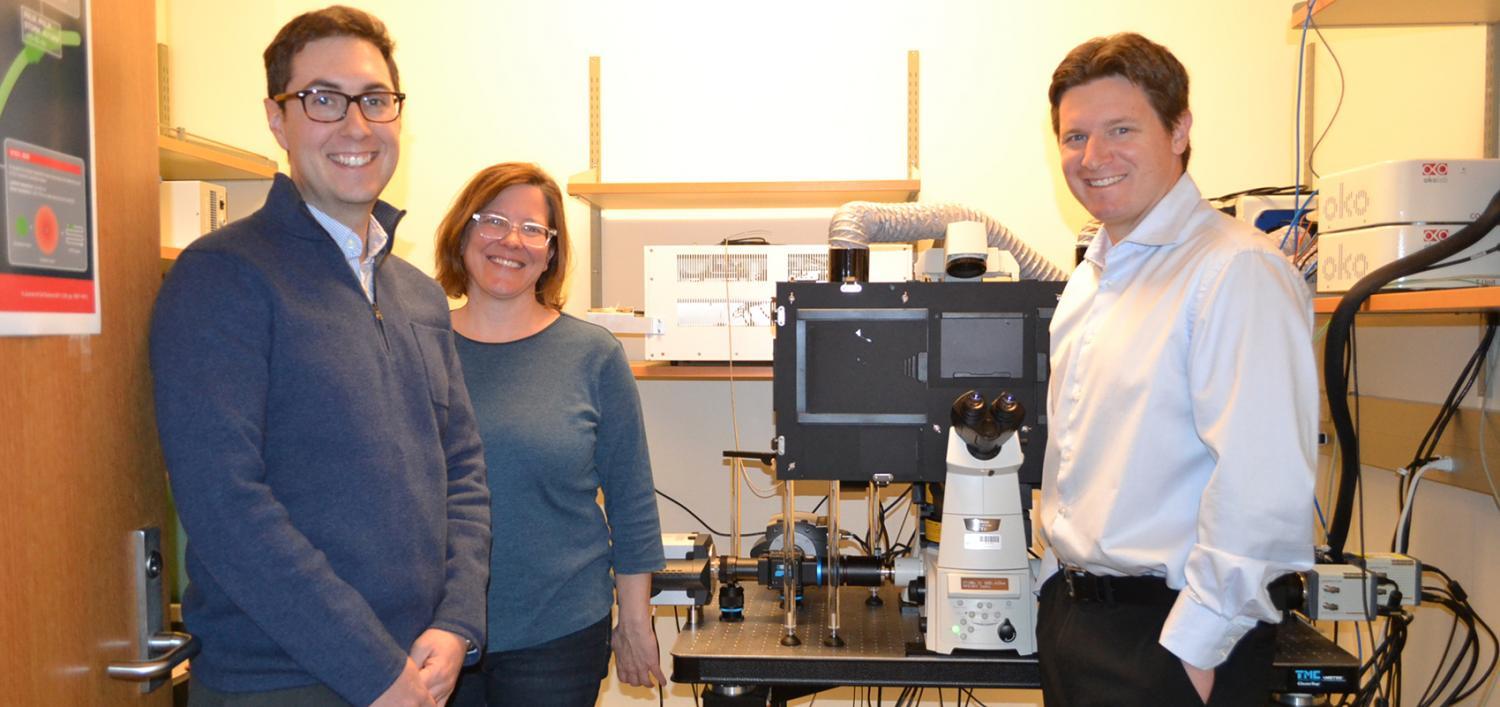For BioFrontiers and Syncroness collaboration, imaging is everything

L-R: Josh Peifer, Joanne Vozoff, Joe Dragavon
When Syncroness, a Westminster-based technical product development and engineering firm, needed a highly technical solution to satisfy a client need, it turned to CU Boulder and the BioFrontiers Institute for assistance.
The decision paid off, providing access to the BioFrontiers Advanced Light Microscopy Core facility, allowing Syncroness to deliver a solution to its customer and demonstrating how academic research communities can facilitate innovative solutions to commercial challenges.
“This is the kind of mutually-beneficial relationship with high-tech business partners we would like to build on,” said Mike Traxler, industry program manager for CU Boulder’s Office of Industry Collaboration, which serves as a kind of matchmaker between non-university partners and CU Boulder faculty and facilities. “We have an incredible range of specialized equipment, facilities and research expertise across campus, and much of it can be leveraged by industry to gain a competitive edge. That has certainly been the case with Syncroness. This is also a scenario that allows our faculty and students to collaborate with a company to design world-class products.”
Recently, a Syncroness client commissioned the company to design a diagnostic tool to help prevent fouling in industrial equipment. The tool would need to measure the size and density of microscopic particles in a substrate, and Syncroness needed a baseline to measure performance of the system. The project demanded advanced imaging acquisition and analysis – not the kind of thing you just pick up at the local office supply store.
It is not feasible for Syncroness to invest in specialized equipment for each individual project, let alone the time to cultivate deep expertise, given the rapid commercial schedules it executes. To maintain a sustainable business model, Syncroness seeks cutting-edge partnerships and collaborations that “extend expertise beyond what we have at Syncroness,” said Todd Mosher, Syncroness’ VP of Engineering. “We appreciate CU Boulder as a partner because we can leverage the university’s extensive investments in research equipment and expert staff.”
A match made in ... Boulder
Syncroness determined that the best solution would be to partner with experts in imaging analysis. Joanne Vozoff, PhD, the systems engineer on the project, reached out to a connection at CU Boulder who helped her identify the Advanced Light Microscopy Core facility at BioFrontiers Institute as a potential partner.
Syncroness staff and representatives from Syncroness’ client visited BioFrontiers and worked with facility director Joe Dragavon on image acquisition. Next, Image Analysis Specialist Jian Wei Tay constructed unique algorithms for the image analysis to create known references to test the system’s performance. Syncroness used these known references to update the particle detection algorithms used by the equipment in the field.
The BioFrontiers Advanced Light Microscopy Core facility primarily serves academic collaborations across CU Boulder and the Front Range, although five to 10 percent of the facility’s revenue comes from industry and third-party partners. While its academic customers are the top priority, providing access to industrial partners expands collaborative opportunities for the university and adds a modest but important revenue stream.
Mosher anticipates that there will be more collaboration between Syncroness and the BioFrontiers Advanced Light Microscopy Core facility, but the opportunities don’t end there. In addition to its work with the microscopy facility, Syncroness frequently partners with engineering faculty at CU Boulder on projects in both research and product design, and has hired numerous graduates of the College of Engineering and Applied Science and the Leeds School of Business. “As a CU alumni myself, I think it is important for CU Buffs to hire Buffs to build their businesses,” Mosher said.
Faculty, students and interested potential partners can visit the Office of Industry Collaboration website to learn more about university-industry opportunities.

